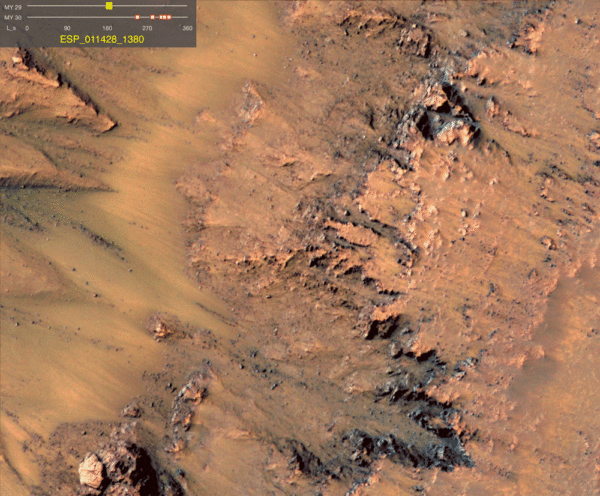Evidence of landslides on Mars may also raise the prospects that the Red Planet was once hospitable to life.
A new study, published Feb. 3 in the journal Science Advances, found that melting ice is combining with the Red Planet’s salty subsurface permafrost, resulting in a chemical reaction that creates a “liquid-like flowing slush.” Scientists think this slush causes landslides that leave dark, narrow lines known as recurring slope lineae (RSL) on the Martian surface. While the icy slush is currently too salty to harbor life, that may not have been the case 2 billion to 3 billion years ago, the study’s lead author Janice Bishop, a senior research scientist at the SETI Institute, told Live Science in an email.
Scientists have known about the landslides, some of which occur near Mars’ Palikir and Krupac craters, for at least a decade, Bishop said. During that period, NASA’s High Resolution Imaging Experiment (HiRISE) camera captured images of small landslides, known as “slumps,” and the RSLs, which she believes are features of landslides.



